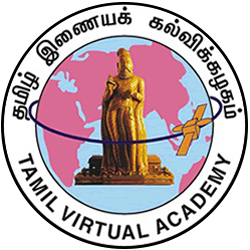Primary tabs
Lesson 3
A05113 Evolution and Growth of the Tamil Language Historical Evidences
This lesson traces the growth and history of the Tamil language. Rock inscriptions, documents inscribed on copper plates, literary texts, grammar texts, archeological findings, and writings of foreign linguists have been of great help in documenting the history of the Tamil language.
Rock inscriptions are an invaluable source of evidence in understanding the history of the Tamil language. It was customary in ancient times to inscribe the orders and achievements of kings on rocks. Once carved on the hard rock surface, it was impossible to change or modify these inscriptions. Hence they are an authentic source of the language of that period. The Brahmi inscriptions of the 3rd century A.D found in various parts of Tamilnadu and the Chola inscriptions found in the temples built by them are worth mentioning. Similarly documents on copper plates have also aided in studying the history of Tamil.
Grammar books written during various periods in history have helped a great deal in understanding the growth of Tamil. “Tholkappiam” is the first grammar book in Tamil. “Neminatham”, “Veerachozhiyam”, and “Nannool” offer insights into Tamil language of the Chola period. Mention must also be made of Tamil grammar texts written by foreigners. Dictionaries compiled at various points of time are a vital source of information regarding the evolution of Tamil. “Thivakara Nikandu”, a thesaurus in verse, was published in the 9th century A.D. and has around 9500 words. “Sathuragathy”, the dictionary published by Veeramamunivar in 1782 has 12000 words. Literary texts, folk and oral literature of various periods have been of immense help in tracing the history of the Tamil language.


